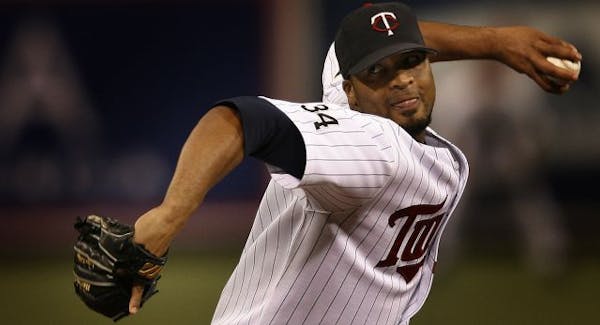Innovative statistical analysis is very popular in baseball these days. Almost as popular and innovative as all those things the kids like -- MyBook and FaceSpace and Twistering.
These days, you allegedly can't enjoy a ballgame without knowing what VORP is, and how to cure it. You don't, however, need to know anything about innovative statistics to know that the Twins will have to break a trend to win big this season, a trend that seems based on biorhythms, or the burden of high expectations.
Since the Twins returned to the living in 2001, they have generally exceeded expectations in even-numbered years, and flopped in odd-numbered years. You might not be able to tell that by looking at their playoff appearances, but you know that's true if you followed the team closely all decade.
In 2002, the Twins ran away with the division and advanced to the ALCS. For a team that had just broken a streak of eight consecutive losing seasons the year before, this constituted a grand success.
In 2003, the Twins, despite bringing back every important player from 2002, played like dogs for 31/2 months, before they were revived by the Shannon Stewart trade. Making the playoffs made the season a success, but this team collapsed under the burden of high expectations and was saved only by one of the great trade-deadline deals in recent history -- Bulky Bobby Kielty for Stewart, who would become the MVP of the 2003 Twins in just 10 weeks.
In 2004, the Twins won the division and came close to taking a 2-games-to-0 lead in the playoffs against the Yankees, being foiled only by Corey Koskie's double bouncing into the stands and preventing the go-ahead run from scoring in Game 2 at Yankee Stadium. This marked another successful season in an even-numbered year.
In 2005, the Twins started the season with a stacked roster and loads of postseason experience ... and morphed into a bunch of infighting underachievers.
That was the season Johan Santana constantly offered subtle insults about his teammates, while complaining about his lack of run support. That was the season Carlos Silva let his frustrations shine through, the season that Torii Hunter threw a punch at Justin Morneau, missed and hit Nick Punto, prompting one of the great lines in Twins history when Punto, proud of his bruise, said, "Hey, I just got punched by Torii Hunter!"
That season was a disaster.
So in the spring of 2006, the Twins looked like they were on the downslope of their success. They responded to the collapse of 2005 by playing Tony Batista and Juan Castro on the left side of the infield. The two offered the combined range of a beached, anesthetized manatee.
Just when the Twins looked doomed, manager Ron Gardenhire inserted Nick Punto and Jason Bartlett on the left side and had a talk with Justin Morneau, and the Twins went on their most impressive run of baseball since they last won a World Series.
As underdogs, they thrived in 2006. As favorites, they flopped in 2007. With Torii Hunter and Johan Santana in their last seasons as Twins, a loaded roster paid homage to the dogs of 2005.
So in the spring of 2008, the Twins took on the look of a rebuilding franchise. Their rotation featured a bunch of kids and the explosive Livan Hernandez. Mike Lamb and Adam Everett manned the left side of the infield.
This team was a mess until -- does this sound familiar? -- Gardenhire blew up his infield, this time inserting Alexi Casilla, Punto and Brian Buscher. The 2008 Twins faltered in September, lost a one-game playoff and still exceeded expectations.
Which brings us to 2009 and another season of great expectations. These Twins are young, talented, affordable and deep. Unfortunately for Twins fans, they're also favored. That hasn't worked out too well in odd-numbered years this decade.
Jim Souhan can be heard Sundays from 10 a.m.-noon on AM-1500 KSTP. jsouhan@startribune.com

Souhan: Wolves fans made Game 1 special. Now bring on Game 2.

Souhan: Should Vikings even consider McCarthy in NFL draft?

Souhan: NAW erases Suns' lead, Game 1 advantage with big performance

Souhan: This is KAT's chance to prove Flip Saunders was right


